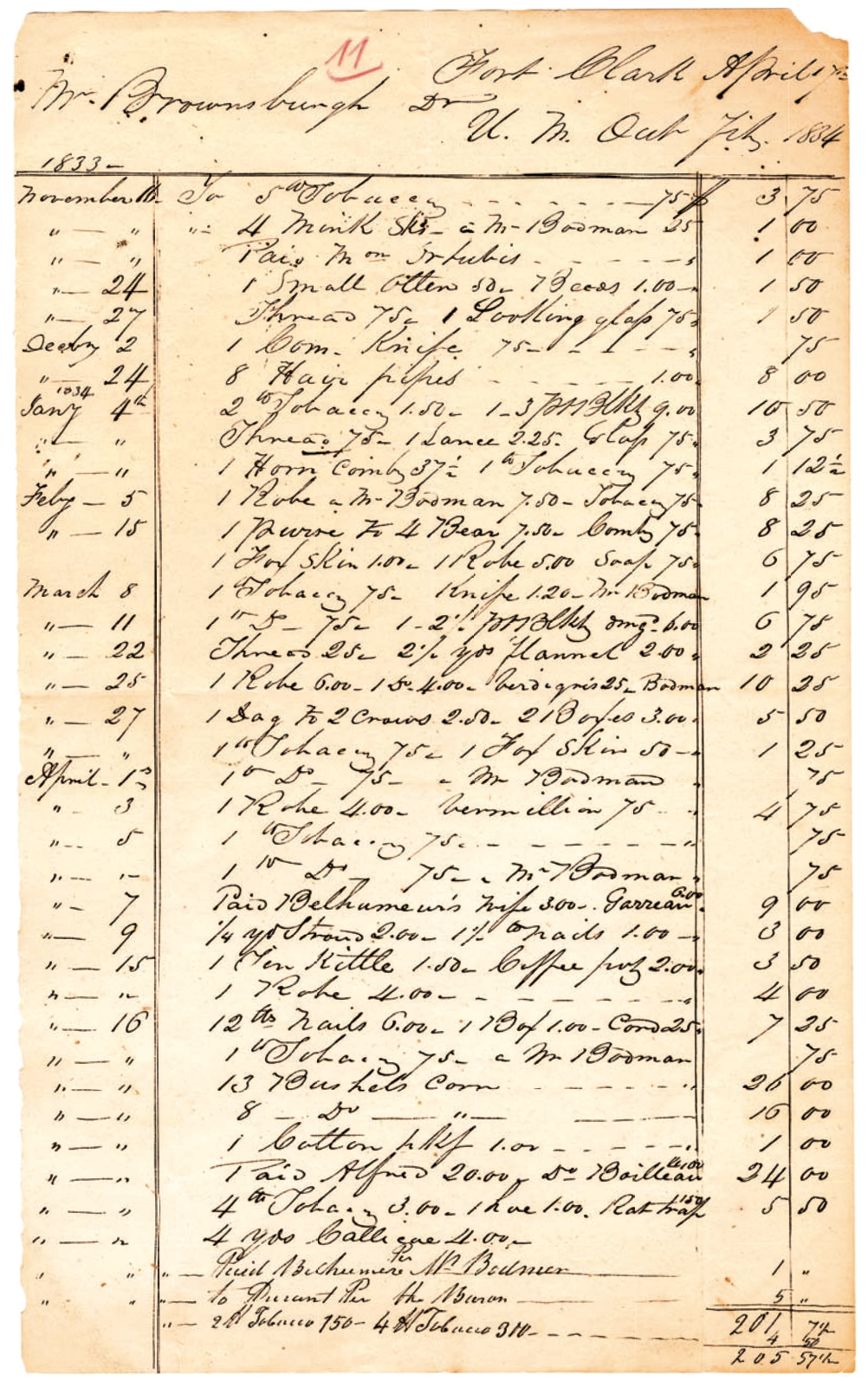November 24, 1833
24 November: Early in the morning, bright sky, almost no wind; wind from west hora 8 north, cold. At seven thirty, 12 3/4°F ⟨[−10.7°C]⟩. Mató-Tópe got up early; however, he left his buffalo hides in the room for us ⟨[to deal with]⟩. The Indians are all careless in this way; ⟨[they]⟩ take life easy. For example, when they smoke, as soon as the pipe is empty, they give it to the next white so that he ⟨[will]⟩ put it on the table. They themselves are too lazy to move. Whites are usually well inclined to wait on these people.
Because of all the rats, we put our tame little prairie fox in the attic during the night, where a large amount of Indian corn was stored. He often chased the rats and made a lot of noise; we presumed that he caught some of them too.
Later I gave Mató-Tópe a necklace of bear claws to take along, which he will finish for me. I bought an otter skin and blue glass pearls in the store for added decoration. Furthermore, I gave him colors and a piece of paper ⟨[so that he could]⟩ paint for me one of the skirmishes he ⟨[had]⟩ participated in. Mr. Bodmer also gave him several colors. The sun was shining very warm at noon. At twelve o’clock, 36°F ⟨[2.2°C]⟩; wind brisk from west.

Two Ravens and several other Indians visited Mr. Kipp. There were a few interesting tall men among them. Péhriska-Rúhpa (Two Ravens) was dressed nicely. ⟨[On]⟩ his broad brown chest was a deep hole from an arrow shot. A strip of wolf-skin ran ⟨[across]⟩ his right shoulder; a panther-skin quiver hung ⟨[from the same shoulder]⟩.
A few Hidatsas had brought back a number of beaver pelts from their beaver hunts ⟨[and]⟩ wanted to ⟨[know]⟩ the price. Among them was also the old Hidatsa chief Addíh-Hiddísch (le Vieux Chemin, Old Road), who had caught more than fifty beavers, including a spotted one. Tomorrow Mr. Kipp will buy close to 100 or 150 beaver pelts, having a value here of a few thousand dollars.
A beaver hunter from the upper Little Missouri came; ⟨[he]⟩ brought about forty beavers along. His name is Sconnká. He told me that the paper birch (Betula papyracea) grows on the upper Little Missouri and Knife River, about a three-day trip from the Missouri at the foot of the Black Hills (côte Noire). He brought along a piece of the inner bark, the so-called paper. He had also shot a very white bear and brought along its skin. In the evening this hunter made many interesting comments to me about those areas. In the meantime, the old Addíh-HiddíschM20This means Maker of Roads. Actually, He who Makes Roads. sat the whole evening and smoked. He looked strange. He wore an old round hat on his head, his hair hung wild around his head, he wore an old vest, and his arms were bare. The man is said to be a very good Indian. Mr. Bodmer, who had ⟨[seen]⟩ the body of a wolf on the near the fort, saw two wolves in ⟨[the]⟩ nice, bright, full moonlight, but ⟨[the animals]⟩ had yet to approach the carcass. They would doubtless ⟨[do so]⟩ during the night. The evening was very beautiful ⟨[and]⟩ not especially cold.


